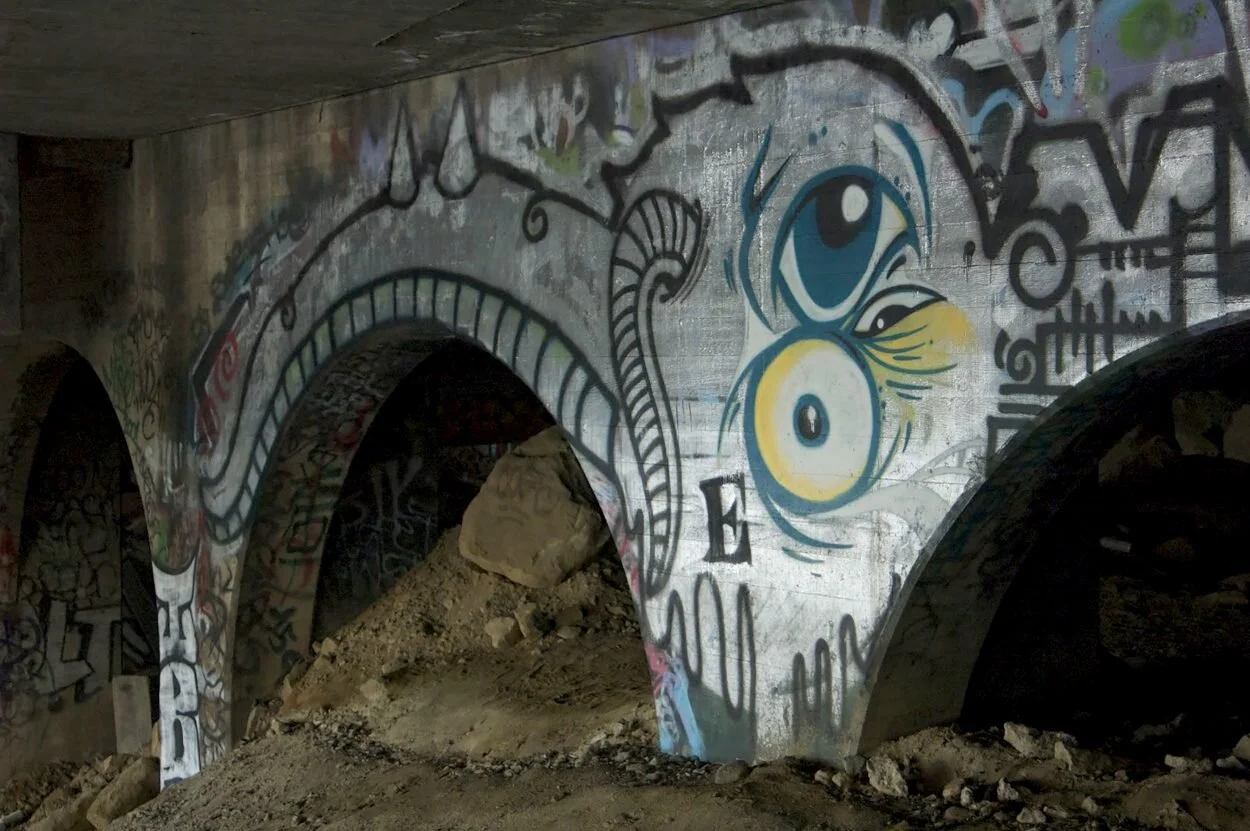Susan Phillips on how graffiti communicates social issues
Susan Phillips was looking for a link between art and society and was able to find it in gang graffiti, which she has researched since the 1990s. Photo courtesy of Susan Phillips
Over a period of 30 years, Susan Phillips has collected hundreds of pictures of graffiti: homeless graffiti, military graffiti, graffiti on bridges, graffiti in storm drains and graffiti from Hollywood sets.
Her website boasts pictures of colorful murals — from names in blues, yellows and greens, pictures of hands and eyes, etchings of black numbers, to drawings of Native Americans, jewels and flowers.
“The storm drain tunnels are the most visually impactful pieces to me, and that impact is heightened by the weirdness of the tunnels as a location for exploring and shooting,” she said.
Phillips, a professor of environmental analysis at Pitzer College, is a gang graffiti researcher and spoke to about 50 Chapman students on Oct. 21 in Argyros Forum. Recently, she has published a novel, “The City Beneath: A Century of Los Angeles Graffiti,” set to come out on Nov. 26. The novel includes research on a variety of subcultures of graffiti artists.
“I was looking for a visceral link between art and society in our culture and I found it in gang graffiti. I never looked back. Even before graduate school, I was taking pictures of gang graffiti,” Phillips told The Panther about her initial research into graffiti.
Phillips’ research made her more aware of social and criminal justice issues and the intersection between art and society. She began to look into other micro-communities that are featured in her book. Phillips also looks through archival images taken by other people, as the work can be impactful.
“I see these (pictures) as precious objects and pore over them. They can be from any era, and through them I feel that I’m immersing myself in a different place and time,” she said.
Phillips spent a large portion of her talk speaking about the graffiti on Hollywood sound stages.
“It’s a kind of graffiti no one has ever heard about,” Phillips said. “In the catwalks is where I did this research: it reflects this pride that people have in the work they do.”
She spoke about a grip she met named Jimmy Baltimore, who once said, “You’re not allowed to express yourself in this business unless you’re an actor,” so graffiti is their expression. James Park, a freshman history major, attended the event as part of his class, “How Modern Art Shook the World.”
He considered graffiti as vandalism that should eventually be cleaned up, but gained new insights into the art form.
“I didn’t see graffiti as a way to see history. Originally I saw graffiti as a detriment to society,” Park said. “The way I see it is graffiti comes from gangs or criminals; when I see that infrastructure, I see that as a waste of money to clean. I didn’t realize it was something that had history behind. It didn’t change my outlook, it just surprised me.” Phillips commented on graffiti being an art form that only recently has been considered vandalism.
“You have to think about what it means to be living in a literate society where there was no access to paper,” Phillips said. “The graffiti at Pompei is preserved. People would leave messages on the inside of people’s houses. That’s how people were writing.”
Phillips also spoke to her role as a woman studying in a male-dominated art form.
“It has never caused a problem. Sometimes people feel protective of me. I was very young when I started,” Phillips said.
She mentioned that in her work around Los Angeles, especially studying gangs, she has been in some dangerous areas, but it has not seemed to phase her.
“My best form of protection is being friendly and open with people,” Phillips said. “I’m very interested in people and I give them a lot of respect and people just respond to that.”
She has focused on graffiti around Los Angeles because she was raised there and feels a connection to the city.
“I thought I knew about L.A, but when I started this project I was reading and writing about things I had never heard about before,” Phillips said. “I want to introduce people to these stories that might not come through. I feel really lucky to get to do this work, and to be contributing to new histories of the City of Los Angeles.”

